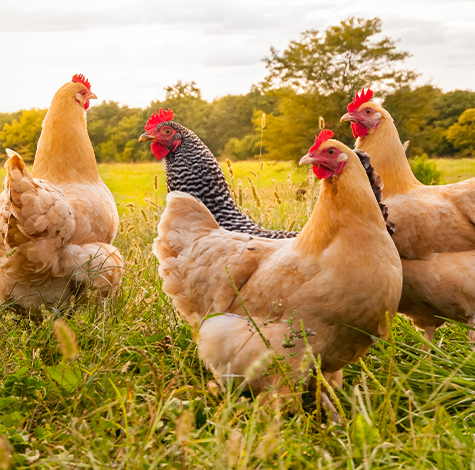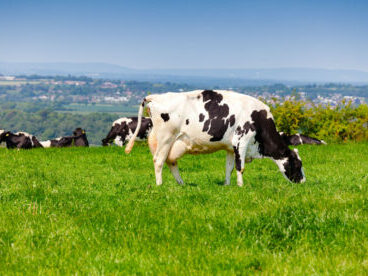A better understanding of how butterfat is produced makes it possible to feed cows more successfully for higher milk quality.
Feeding to improve butterfats this spring and summer
A better understanding of how butterfat is produced makes it possible to feed cows more successfully for higher milk quality, as UFAC UK’s Mike Chown explains.
It used to be thought that 50% of butterfat came from VFAs produced by rumen fermentation of digestible fibre and 50% from the oils in the diet. New milk fatty acid analysis by NMR and CIS suggests that as much as 75% of butterfat is actually directly derived from the oils in the diet, making dietary fats and oils even more important.
To maximise fat production you need to make sure the basic diet is right and then ensure enough oil/fat in the diet.
For the basic diet you need to establish and maintain an effective rumen fermentation and maximise dry matter intakes. Key to this will be factors including feeding frequency and feed space, balancing the sources of energy to ensure rumen synchrony and reduce acidosis risk, and avoiding sudden changes to the ration.
For grazing cows it will be vital to maintain grazing quantity and quality. Don’t leave the contribution from grazing to chance. Measure it and manage it so that cows are getting plenty of high quality grazing. Clean water is vital for maintaining intakes.
Then the issue is providing sufficient fat or oil. Table 1 shows the dietary fat requirements for different yield and fat percentage combinations.
Quite simply, if you don’t provide enough oil you won’t get the fat yield and fat percentage. You also increase the risk of cow’s mobilising body fat leading to condition score loss.
Grazing supplementation
The first problem is that grazing and silage are poor sources of oil. Cows eating 12kg forage DM/day will get approximately 320g/day of oil derived from rumen function so will need supplementation if butterfat production is to be maintained.
A 32 litre cow at 4.0% fat produces 1280g/day of butterfat. In addition to the 320g from the rumen, she requires a further 960g of dietary fat. So it is essential to know the oil content of supplementary feeds.
TMR fed herds face a potential problem as most commonly used straights such as cereals and oilseed meals are 2.5-3.5% fat, making it hard to get the fat intakes required to support higher milk yield, butterfat levels and fertility. Table 2 shows target oil contents in diets to meet requirements.
If our cow giving 32 litres at 4.0% is eating 22kgDM/day, the diet must be a minimum of 4.36% oil/kgDM.
The most effective way to ensure sufficient supplementation is to include balanced dietary fats in the TMR. You need to ensure products added are rumen inert and highly digestible, with a blend of essential fatty acids from digestible oils and C16 fats combined with glycerol to increase energy utilisation. Fed at 300-750g/cow/day, UFAC’s Dynalac, Buta-Cup Extra and Omega Cream are proven to supply the essential fatty acids required to support higher butterfats and complement the rest of the diet. Being rumen – inert they help reduce the risk of acidosis and will not compromise the digestion of the rest of the diet.
When considering fat levels in the diet, pay particular attention to the RUFAL (rumen unsaturated fatty acid loading) of the diet. High RUFAL levels can compromise rumen fermentation. Some feeds like distillers may appear high in oils but can actually suppress butterfat, as rather than supplying effective oils, the high RUFAL content disrupts the normal butterfat production pathway.
Total diet fat
Compound feeds will not usually supply sufficient oils. Compounds typically contain 5.5% oils making it difficult to achieve adequate oil intakes at typical feed rates.
By paying close attention to the total diet it should be possible for many farmers to maintain milk prices and margins this summer by pursuing a strategy of improving butterfat percent. But it will be essential to monitor performance, costs and returns hawkishly to make sure that you are making a worthwhile return.
| Table 1 Dietary fat (g/cow/day) requirements for different combinations | ||||
| Litres | 28 | 32 | 36 | 40 |
| B Fat % | ||||
| 3.80 | 798 | 912 | 1026 | 1140 |
| 3.90 | 819 | 936 | 1053 | 1170 |
| 4.00 | 840 |
960 |
1080 | 1200 |
| 4.10 | 861 | 984 | 1107 | 1230 |
| 4.20 | 882 | 1008 | 1134 | 1260 |
| Table 2 Net dietary oil requirement (%/DM) | ||||
| Litres | 28 | 32 | 36 | 40 |
| DMI (kgs) | 21.00 | 22.00 | 23.00 | 24.00 |
| B Fat % | ||||
| 3.80 | 3.80 | 4.15 | 4.46 | 4.75 |
| 3.90 | 3.90 | 4.25 | 4.58 | 4.88 |
| 4.00 | 4.00 |
4.36 |
4.70 | 5.00 |
| 4.10 | 4.10 | 4.47 | 4.81 | 5.13 |
| 4.20 | 4.20 | 4.58 | 4.93 | 5.25 |


 Back to News
Back to News 



